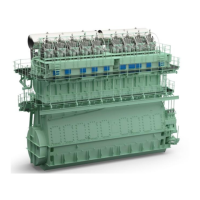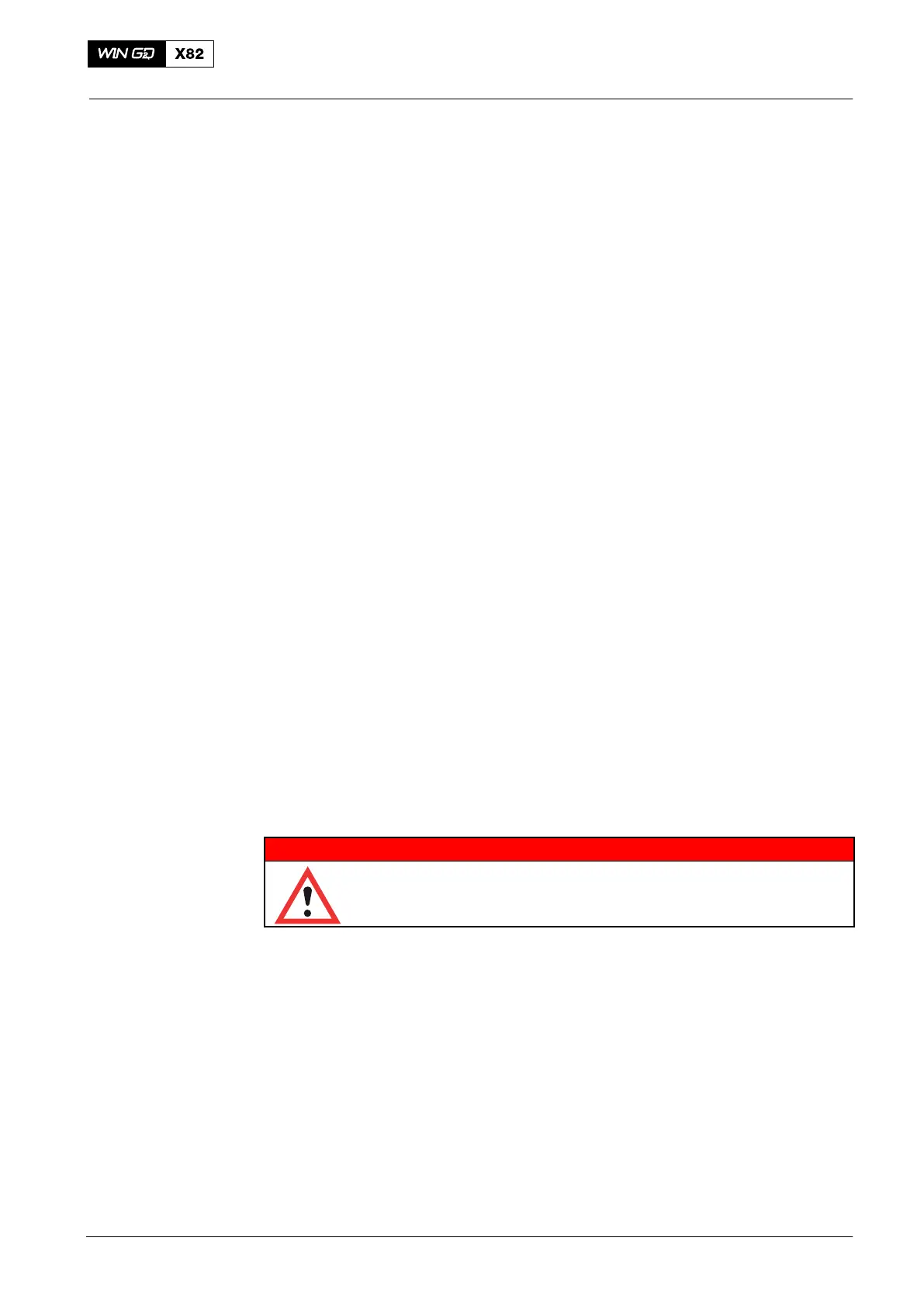Operation
6420−1/A1
Winterthur Gas & Diesel Ltd.
1/ 3
Scavenge Air Receiver
1. General
The scavenge air receiver (5, Fig. 1) is a welded assembly and attached to the
cylinder jacket (19, Fig. 2) on the exhaust side. The scavenge air receiver has the
parts that follow:
D Receiver
D Turbocharger support
D Air duct
D Charging unit
D Scavenge air cooler casing.
Different types of relief valve (4) can be installed on the end of the scavenge air
receiver. The relief valve can have cup springs (7) or a compression spring (8).
The relief valve (4) opens when the air pressure increases to more than the permitted
value in the receiver space.
The longitudinal wall (16) divides the receiver into the two spaces (AS) and (RS). The
air flaps (17) are attached to the longitudinal wall (16).
2. Function
During operation, the turbocharger blows scavenge air through the scavenge air
cooler (SAC) (9, Fig. 2) into the charging unit (10), through the water separator (11)
and then into the air space (AS). The air then flows through the air flaps (17) into the
receiver space (RS) and through openings in the cylinder jacket (19) to the piston
underside (PU). The scavenge air flows through the scavenge ports when the piston
is near BDC. The air flaps (15) prevent back-flow into the air space (AS).
Two auxiliary blowers (1) are attached to the top of the scavenge air receiver. During
engine start or at low engine load, the auxiliary blowers come on and move scavenge
air from the space (AS) through the suction box (6) to the receiver space (RS). The
air flaps (15) installed under the suction box prevent the back-flow of air when the
auxiliary blowers are set to off.
WARNING
Injury Hazard: Do not go into the the receiver space (RS) during
engine operation. Access into the receiver space through the
covers (2) is possible only when the engine has stopped.
It is possible to examine the parts that follow from the receiver space (RS):
D Some of the running surface of the cylinder liner.
D Some of the piston and the piston rings.
D The piston rod gland.
D The air flaps (2).
You can open the hinged covers to examine the air flaps (17).
Note: If the turbocharger becomes defective, the covers (12) on the charging
unit must be opened for emergency operation (see 0590−1 Turbocharger
out of Service).
2014

